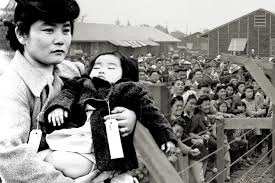
Inventory, Transportation and Warehousing
Order Instructions:
The writer has to pay close attention to APA 6th Edition for this paper, it is also critical that the references follow APA 6th edition and must include all doi where necessary and also the UR links when sources are taking from the internet. In the previous papers the writer has giving very little attention to that. its is very important that he or she take note of that and properly reference the paper.
The are two main points to discussed in this paper and the writer must clearly and detail respond to those two points.
Inventory, Transportation, and Warehousing
Imagine that you are the logistics manager of a firm supplying fashion clothes to the big stores. Being able to reliably assign costs to activities is a crucial management tool. However, the kind of transaction data traditionally used in logistics can present problems for activity-based costing.
• What are the main factors affecting the optimal level of product availability in your organization? Give practical examples to show how technology can help the inventory manager to improve the balance between the costs of over- and under-stocking in the business.
• What are the main difficulties involved in assigning meaningful costs to the activities in warehouses? How can these difficulties be overcome and cost savings achieved?
Resources
Articles
• Wallin, C., Rungtusanatham, M. J., & Rabinovich, E. (2006). What is the “right” inventory management approach for a purchased item? International Journal of Operations & Production Management, 26(1/2). Retrieved from ABI/INFORM Global database.
This article explores four basic approaches to the problem of inventory management and shows their application to different circumstances.
• Pokharel, S. (2005). Perception on information and communication technology perspectives in logistics: A study of transportation and warehouses sectors in Singapore. Journal of Enterprise Information Management, 18(1/2). Retrieved from ABI/INFORM Global database.
This survey analyzes perceptions of logistics companies in Singapore concerning the benefits of ICT applications for their industry.
• Varila, M., Seppänen, M., & Suomala, P. (2007). Detailed cost modelling: A case study in warehouse logistics. International Journal of Physical Distribution & Logistics Management, 37(3). Retrieved from ABI/INFORM Global database.
This study considers the various drivers for assigning activity costs to products in warehouse logistics and concludes that the accuracy of accounting can be significantly increased by measuring the actual duration of transactions.
• Timme, S. G. (2003). The real cost of holding inventory. Supply Chain Management Review: Top 50 PLs, 7(4), 30-37. Retrieved from ABI/INFORM Global database.
This article examines the total costs involved with holding inventory. The author also presents a solution to valuing inventory and how it can lead to better management decisions.
Web Sites
Beasley, J. E. (n.d.). OR-Notes. Retrieved from http://people.brunel.ac.uk/~mastjjb/jeb/or/invent.html
This academic Web site provides detailed information, charts, and diagrams regarding inventory control.
SAMPLE ANSWER
Inventory, Transportation and warehousing
Overstocking refers to having excess amounts of stock than is necessary. This is usually attributed to poor management of the inventory, demand or material flow particularly to process management. This is also considered as a form of losing revenue as it is tied up in capital and additional costs of storing the items. Under-stocking on the other hand refers to having inadequate amount in relation to items or supplies. These are the two main issues affecting the efficient and effective means of supplying fashion clothes to large stores (Jaber, 2009).
This has in turn, led to a number of drawbacks in the efforts of the firm to achieving its desired goals and objectives. In the case of overstocking, it leads to various consequences. First, the funds are held up in capital and these funds could have been used in different other areas that would have boosted the company on its path to success. Second, the excess stock will require additional space and this means incurring additional costs for storage space. Furthermore, the cost will also include maintenance fees. Third, the stock may deteriorate in quality and at times become obsolete given the fast changing trend of fashion (‘Reduce the risk of overstocking’, 2012).
In the case of under-stocking, it leads to poor operation of the production process and poor delivery schedules. Under-stocking may lead to paying the labor force yet they were idle most of the period waiting on the production process. The corporate image of the firm may be tarnished as it does not meet the needs of customers. Meeting the demands of the customers may prove difficult and result in unfavorable prices (Müller, 2011).
It is important to maintain a balance between overstocking and under-stocking, and in the current modern business world, this requires the use of a given form of system. A common system that can be used in order to manage inventories efficiently and effectively is the barcode system. When the barcode is applied at the point of sale, usually at a computerized cash register, the sales information of the items is relayed to a larger system that supports the usage information and statistics. This information will be used by the purchasing department in making purchase decisions on the grounds of sales and the level of inventory (‘Inventory Management’, 2010).
There are a number of complications linked to coming up with significant costs associated with activities in a warehouse. These might include a poor system used in the storage process from the time the items are offloaded into the warehouse to the time they are loaded and dispatched. Another difficulty that adds to the process is the distance of the warehouse from the production facility. Furthermore, the arrangement used in the warehouse and the size of the warehouse also impacts negatively in coming up with efficient costs (Richards, 2011).
Viable solutions to mitigating some of the difficulties include coming up with a proper warehouse system such as FIFO: this will provide a basis for knowing how the products will be arranged in the warehouse and how they will be dispatched. This will help in a formal arrangement that will be efficient and save on time which will eventually save on costs. It is important that the location of the warehouse be near the production facility; this will save on transportation costs and will make it easier to manage activities in the warehouse.
References
Inventory Management. (2010). Vox Sanguinis, 98(3p1), e295-e363. doi:10.1111/j.1423-0410.2009.01252.x
Jaber, M. (2009). Inventory management. Boca Raton: CRC Press.
Müller, M. (2011). Essentials of inventory management. New York: AMACOM.
Reduce the risk of overstocking. (2012). Br Dent J, 213(11), 578-578. doi:10.1038/sj.bdj.2012.1125
Richards, G. (2011). Warehouse management. London: Kogan Page.
We can write this or a similar paper for you! Simply fill the order form!












